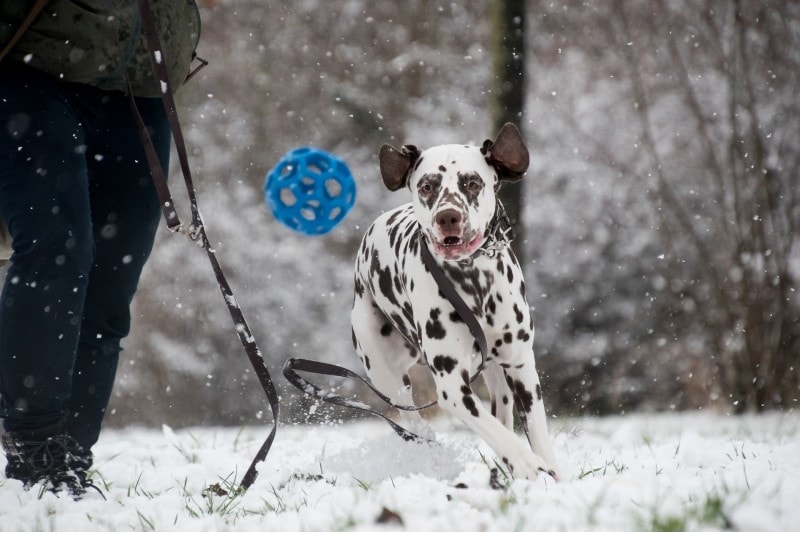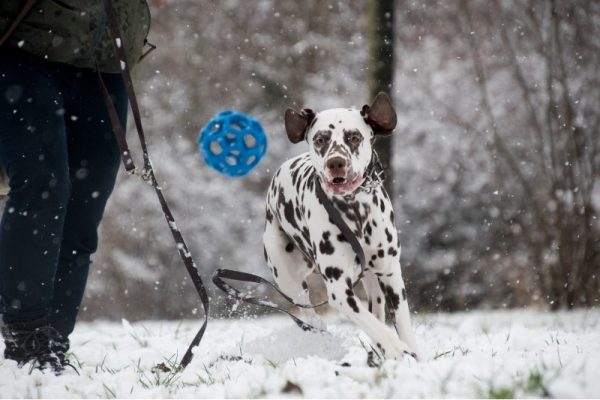Winter can be a tough time for your dog, especially if it’s used to spending the rest of the year going for walks and having daily trips to the dog park. But just because the weather is cold doesn’t mean you can’t participate in fun winter sports with your pup. There are many fun activities the two of you can do together to make the winter months pass by a little faster.
Keep reading to find eight of the best winter sports and activities for dogs and tips for keeping your canine companion safe in the cold weather.
The 8 Dog Winter Sports & Activities to Try
1. Snowshoeing
Snowshoeing is a fantastic winter sport for keeping yourself and your pup fit during the cold months. While many people think this activity is as easy as walking, it’s actually more complicated than just strapping on a pair of shoes and hitting the trail.
Most dog breeds can handle snowshoeing trips, though those with shorter legs may struggle in deeper snow. You should also consider whether your dog has the stamina for a snowshoe hike. Bounding through the snow expends a lot of energy, which may not be the safest for small dogs. If you want to take your small breed dog out, choose a trail with an already compacted surface so it won’t sink too far into the snow.
- Snowshoes
- Waterproof boots shoes
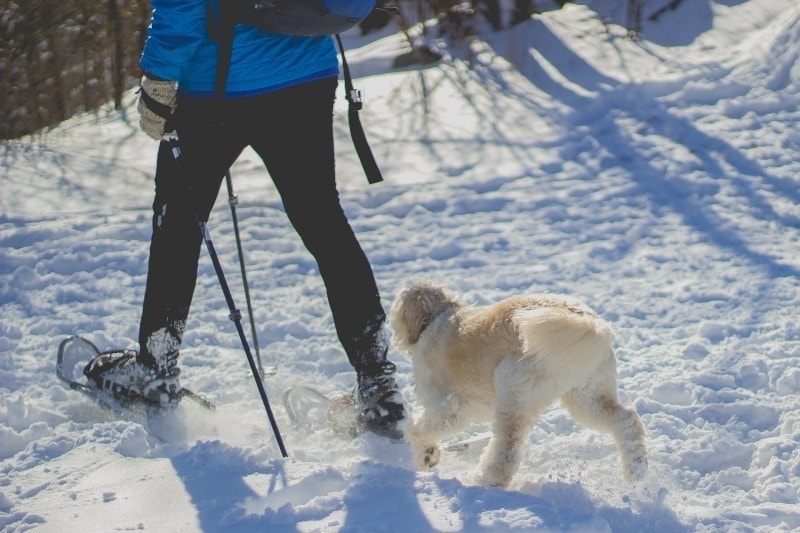
2. Skijoring
Skijoring, from the Norwegian word “skikjøring”, which literally translates to “ski driving“, is a sport that combines dog walking with cross-country skiing. With origins in dog mushing, this dog-powered sport allows your dog to pull you while you’re on skis.
It’s great for dogs of any size, provided you have the proper gear for them. That said, it is rare to see smaller dogs participating as they cannot add much strength or speed. However, since the skier can provide as much power as necessary, even small dogs can do this sport if they are enthusiastic.
- Skijoring dog harness
- Skijoring lead
- Skijoring belt
- Ski poles
3. Hiking
Taking your pup out for a jaunt in the snow is a fun sport and a great way to keep them active during the winter. Both you and your pet must work harder to traverse through the snow.
As with summer hiking, plan your route in advance and let someone know where you’re going. Don’t forget to check the weather reports before heading out.
- Leash
- Collar
- Dog carrying backpack
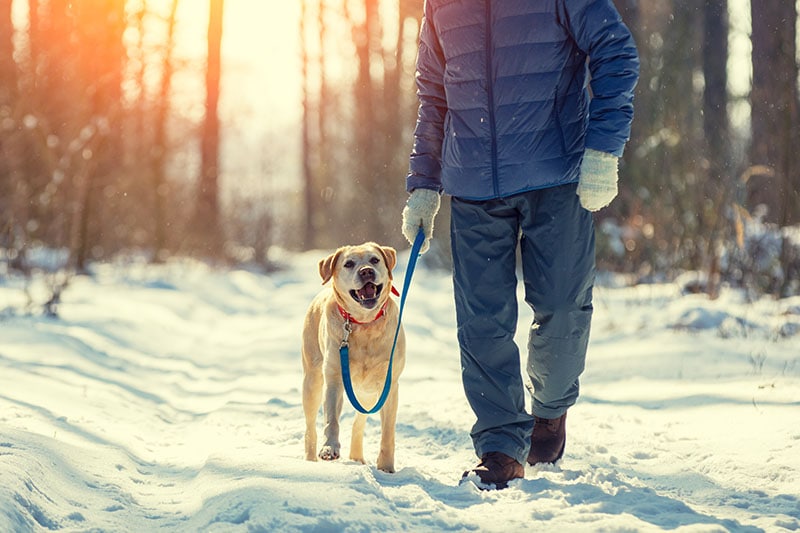
4. Kick Sledding
While dog sledding may be one of the best-known winter sports, it’s not something every dog can participate in. Kick sledding, on the other hand, is an activity accessible to many dog breeds. Dogs over 35 pounds will provide around 50% of the power necessary to go on a kick sled adventure.
This principle behind kick sledding is identical to dog sledding, except you’re using a much smaller team of dogs and providing some of the power necessary to get going. The kick sled design is ideal for just one to two dogs.
The best snow conditions for this sport are on trails with packed snow and ice. The better groomed the trails are, the easier it’ll be for you and your dog(s) to get the hang of this activity.
- Kick sled
- Bungee
- Tugline
- Dog-pulling harness
5. Scent Tracking
Scent tracking is a fantastic winter activity for smart dogs that enjoy a little workout for their brains and body. You can certainly do this activity all year long, but throwing snow into the mix adds a new component of difficulty.
Give your pup a challenge by hiding some of its favorite toys or treats around your yard or dog park in the snow. If your dog is new to this activity, start by hiding things in easy-to-find places.
- Your dog’s favorite toys or treats
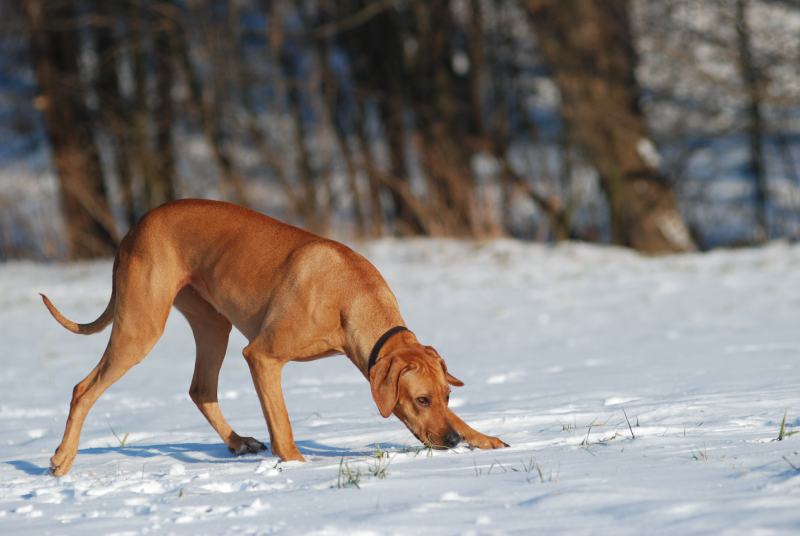
6. Snow Maze Building
All you need to build a snow maze is a yard and a few inches of snowfall. This is a fun activity for dogs of all ages, but especially for smaller dogs for whom other snow sports aren’t as readily available. It’s also fantastic exercise, so it’s a win-win for both of you.
Start by shoveling a maze-like path through the snow in your yard. Make the maze as simple or elaborate as you’d like. Up the ante by adding dead ends and turnarounds to see how your dog reacts. If your pup isn’t keen on this activity at first, encourage it to participate by luring them with toys or treats hidden in certain spots throughout the maze.
There is no additional equipment necessary for building a snow maze.
7. Mushing
Dog sledding is a classic sport that’s been around for centuries. It was developed at first to help people living in remote communities transport food and other goods. However, dog sledding has evolved with time, and though some areas of Alaska, Russia, and Canada still use dog sleds for transportation, it’s most commonly known as a sport involving long races and teams of dogs.
You don’t need a team of dogs to enjoy mushing, as many sleds are designed for single dogs. This isn’t an activity you can start without first training or learning more about it, though, and it’s not something every breed can do. However, most athletic and energetic breeds can learn to pull a sled.
- Harnesses
- Lines
- Snub lines
- Snow hook
- Sled bag
- Dog sled

8. Cross-Country Skiing
Skijoring involves connecting yourself to your dog and going cross-country skiing. You don’t need to join yourselves together to enjoy the sport, though. Cross-country skiing is an awesome winter activity to do with each other.
Keep in mind that this is an endurance sport, and even dogs bursting at the seams with stamina can struggle to keep up. You know your dog and its capabilities best, so be realistic with your expectations when you start cross-country skiing with your pup.
- Cross-country skis
- Poles
How to Keep Your Dog Safe During Winter Activities
The winter environment can be quite harsh, so it’s essential you prep your dog for the journey and take steps to keep them safe. Let’s look closely at some safety steps you shouldn’t skip out on when participating in outdoor winter sports with your pup.
Keep Your Pup Warm
Depending on your dog’s breed and how much fur it has, it may become necessary for your dog to wear a coat in some temperatures. In addition, an insulated jacket designed for dogs will keep them warm and protect them from the harsh elements.
A warm blanket is great for temperature regulation during your breaks.
Protect Their Paws
A dog’s paws are very sensitive to temperature and can be one of the first places your pup will get frostbite. It’s not unheard of for them to develop sores from walking on cold, icy terrain. Ice and snow can also get stuck between their paw pads, causing pain and irritation.
Dog boots or a protective balm are great products to have on hand.
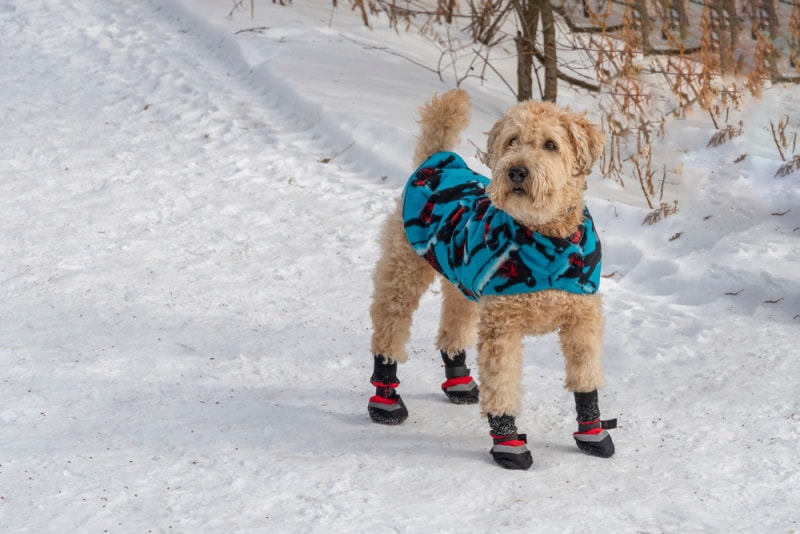
Bring Water
In the summer, your pup pants to try to regulate its temperature. They’ll be more likely to drink water when they’re thirsty then, too. In the winter, however, your pup may not show signs of overheating and could be less willing to drink in colder temperatures.
Offer fresh water often to prevent dehydration.
Watch for Signs of Exhaustion
It’s always a good idea to keep an eye out for signs of dehydration whenever you’re doing any kind of activity with your dog. Winter sports can be especially exhausting because the snow can be challenging to wade through.
If your dog starts slowing down or refuses to continue walking, give them a break to recuperate. The last thing you want to do in the middle of your activity is perform an emergency evacuation because your dog has collapsed.

Watch for Signs of Hypothermia
Puppies, seniors, small dogs, and those with short coats may be more at risk of developing hypothermia during your winter sporting adventures. Mild hypothermia can begin to set in when a dog’s temperature drops below 99°F. If this condition develops and is not treated immediately, it can result in cardiac or respiratory failure, comas, brain damage, or even death.
- Increased heart rate, followed by a slowed heart rate
- Sluggishness
- Paleness
- Dilated pupils
- Rapid breathing, followed by markedly slowed breathing
- Loss of consciousness
Always Check the Forecast
Winter weather can be unpredictable, so be sure to check the forecast before you leave your home for your adventures. You don’t want to be stuck in the middle of nowhere with your dog when a blizzard strikes.
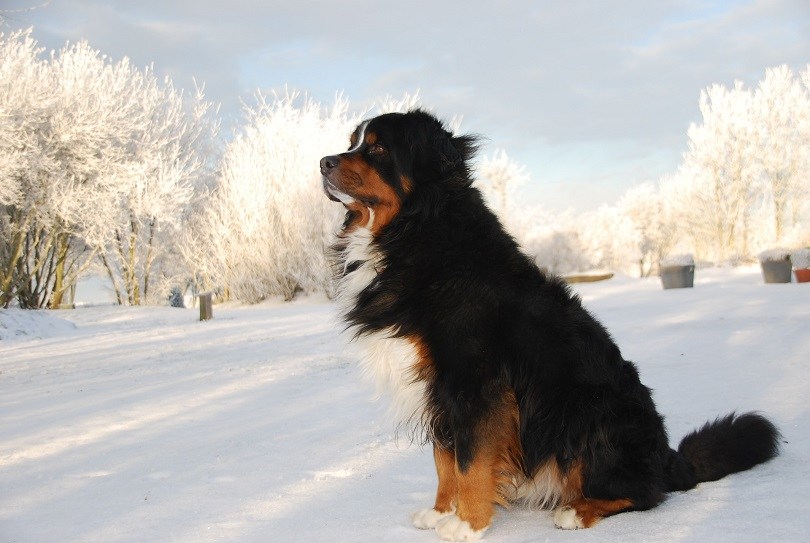
Conclusion
You can do many winter sports and activities with your dog to get you out of the house during those cold months of the year.
Take the necessary steps to ensure your dog not only enjoys these activities but remains safe while doing so. Most importantly, be realistic about your dog’s abilities, so you’re not encouraging it to participate in an activity it isn’t conditioned for.
Featured Image Credit: Rebecca Scholz, Pixabay
Contents
- The 8 Dog Winter Sports & Activities to Try
- 1. Snowshoeing
- 2. Skijoring
- 3. Hiking
- 4. Kick Sledding
- 5. Scent Tracking
- 6. Snow Maze Building
- 7. Mushing
- 8. Cross-Country Skiing
- How to Keep Your Dog Safe During Winter Activities
- Keep Your Pup Warm
- Protect Their Paws
- Bring Water
- Watch for Signs of Exhaustion
- Watch for Signs of Hypothermia
- Always Check the Forecast
- Conclusion

